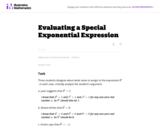
The purpose of this Illustrative Mathematics task is to study the rules of exponents in the context of trying to make sense of a very interesting mathematical expression.
- Provider:
- Illustrative Mathematics
- Date Added:
- 06/22/2022

The purpose of this Illustrative Mathematics task is to study the rules of exponents in the context of trying to make sense of a very interesting mathematical expression.

Evaluating has been called one of the six most important reading comprehension strategies. In this article, it is also considered as a strategy for analyzing and interpreting data. This professional development article appears in the free, online magazine Beyond Weather and the Water Cycle, which integrates science education and literacy instruction for K-grade 5 teachers. Each issue examines one of the recognized essential principles of climate literacy and the climate sciences and one or more reading strategies for elementary teachers and their students.

Students will gain a comprehensive understanding of savings vocabulary and products, the PYF concept, and the importance of preserving principles in the face of inflation.
In this lesson, students will learn about a topic in three different text formats. They will then evaluate each format to determine the pros and cons. Students will also assess the credibility of each text.

The Big6 is a six-stage model to help anyone solve problems or make decisions by using information. Students can use this model to guide them through the research process. This resource describes a Big6 lesson focused on the final step of the Big6 model, evaluation.

In this NASA video, scientists describe how the Extreme Ultraviolet Variability Experiment will sample and track the Sun's ultraviolet irradiance, providing a detailed time sequence of extreme ultraviolet output -- data that can provide advance warning for potentially disruptive energy bursts.
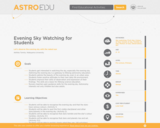
Nursery (or Kindergarten or Preschool) students enjoy seeing the evening sky with the teacher from the playground or through a big window (indoor). This is especially relevant for students who stay for extra-hour care. During late evening hours, some students feel a little lonely waiting for their parents, but they have a wonderful natural treasure: the evening sky. By observing the evening sky with the naked eye, they will notice many colours, changing colours, the first star, the subtle colours of stars, twinkling stars, and the movement of stars. Nursery teachers who think they are not science-oriented will also gain guidance skills of introducing science to students. This activity is also useful for primary school students, especially younger-grade students.

In this adapted video segment, ZOOM guest Tommy takes us on a tour of the Florida Everglades. He describes what makes a wetland biome unique, including the soil, precipitation, and biodiversity.
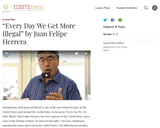
This lesson plan is the third in the "Incredible Bridges: Poets Creating Community" series. It provides a video of the United State Poet Laureate, Juan Felipe Herrera, reading the poem "Every Day We Get More Illegal" and a companion lesson with a sequence of activities for use with secondary students before, during, and after reading to help them enter and experience the poem.

The students will examine, explain, and evaluate Article II, Section 1 of the US Constitution for specific information concerning the eligibility requirements and election process for the office of President of the United States and develop a position and express a viewpoint on the lesson’s "essential question": "How democratic is the American election process for the office of president?"

Students will examine aspects of Article II of the Constitution for specific information related to the requirements for and method of electing the president.

Students analyze stylistic choices and grammar use in authentic writing, focusing on the use of the semicolon in Martin Luther King Jr.'s "Letter from Birmingham Jail."

This inquiry kit features Library of Congress sources about countries who wanted to control the island of Manhattan.

How much radiation are we exposed to every day? Find out in this video segment adapted from FRONTLINE.
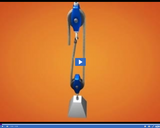
A block and tackle consists of two or more pullies used together.

A lever consists of two parts: a bar and a fulcrum. The fulcrum is a fixed point that supports the straight bar and allows the bar to turn or pivot.
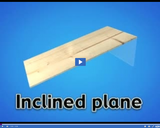
An inclined plane is a flat, slanted surface and is sometimes called a ramp.
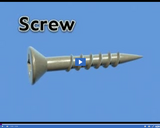
A screw consists of an inclined plane wrapped around a cylinder. As a force is applied, the threads of the screw turn and exert an outward force.
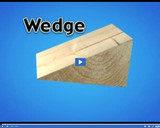
A wedge consists of two inclined planes positioned back to back. Mechanical advantage increases as the wedge gets longer and thinner.

A wheel and axle consists of two circular objects of different sizes. As the wheel grows bigger relative to the axle, mechanical advantage increases.